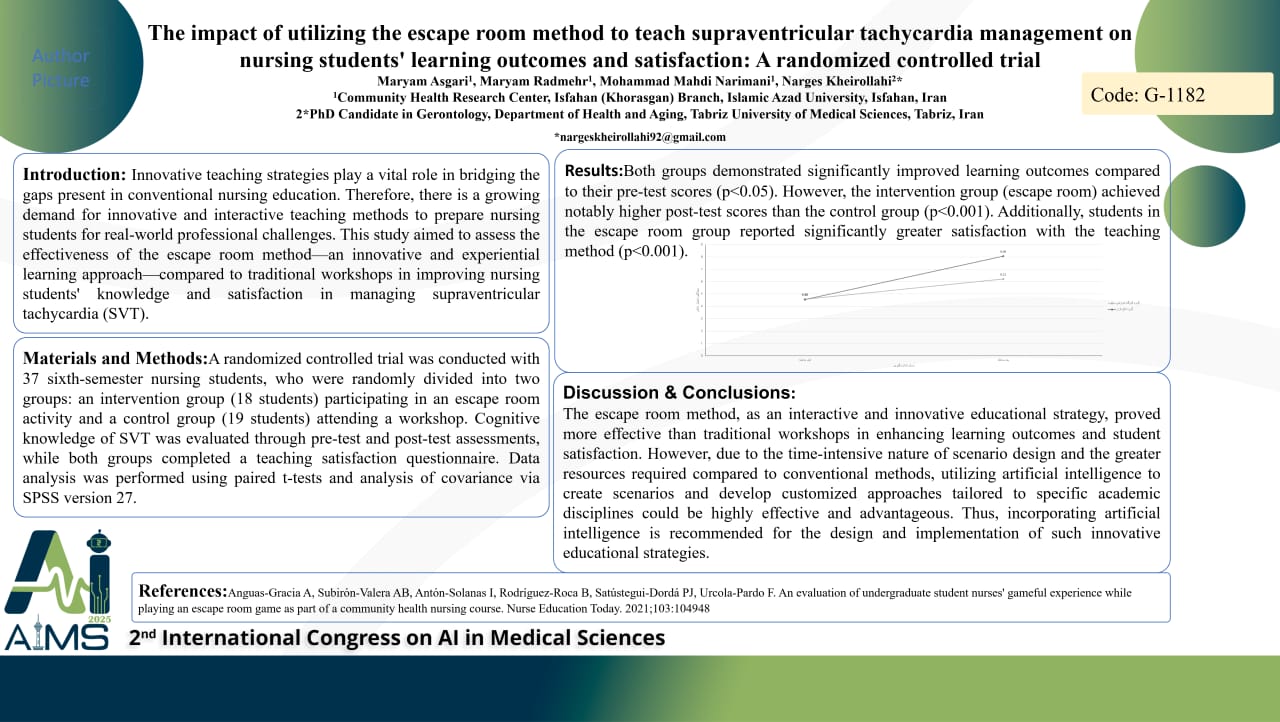The impact of utilizing the escape room method to teach supraventricular tachycardia management on nursing students' learning outcomes and satisfaction: A randomized controlled trial
Code: G-1182
Authors: Maryam Asgari ℗, Maryam Radmehr, Mohammed Mahdi Narimani , Narges Kheirollahi *
Schedule: Not Scheduled!
Tag: Intelligent Virtual Assistant
Download: Download Poster
Abstract:
Abstract
Background and aims: Innovative teaching strategies play a vital role in bridging the gaps present in conventional nursing education. Therefore, there is an increasing need for innovative and interactive teaching methods to equip nursing students for real-world professional challenges. This study aimed to assess the effectiveness of the escape room method—an innovative and experiential learning approach—compared to traditional workshops in improving nursing students' knowledge and satisfaction in managing supraventricular tachycardia (SVT). Method: A randomized controlled trial was conducted with 37 sixth-semester nursing students, who were randomly divided into two groups: an intervention group (18 students) participating in an escape room activity and a control group (19 students) attending a workshop. Cognitive knowledge of SVT was evaluated through pre-test and post-test assessments, while both groups completed a teaching satisfaction questionnaire. Data analysis was performed using paired t-tests and analysis of covariance via SPSS version 27. Results: Both groups demonstrated significantly improved learning outcomes compared to their pre-test scores (p0.05). However, the intervention group (escape room) achieved notably higher post-test scores than the control group (p0.001). Additionally, students in the escape room group reported significantly greater satisfaction with the teaching method (p0.001). Conclusion: The escape room method, as an interactive and innovative teaching strategy, proved more effective than traditional workshops in improving both learning outcomes and student satisfaction. Incorporating the escape room method into nursing education programs is suggested due to its potential to bridge educational gaps and enhance engagement.
Keywords
Education, Supraventricular Tachycardia, Escape Room
